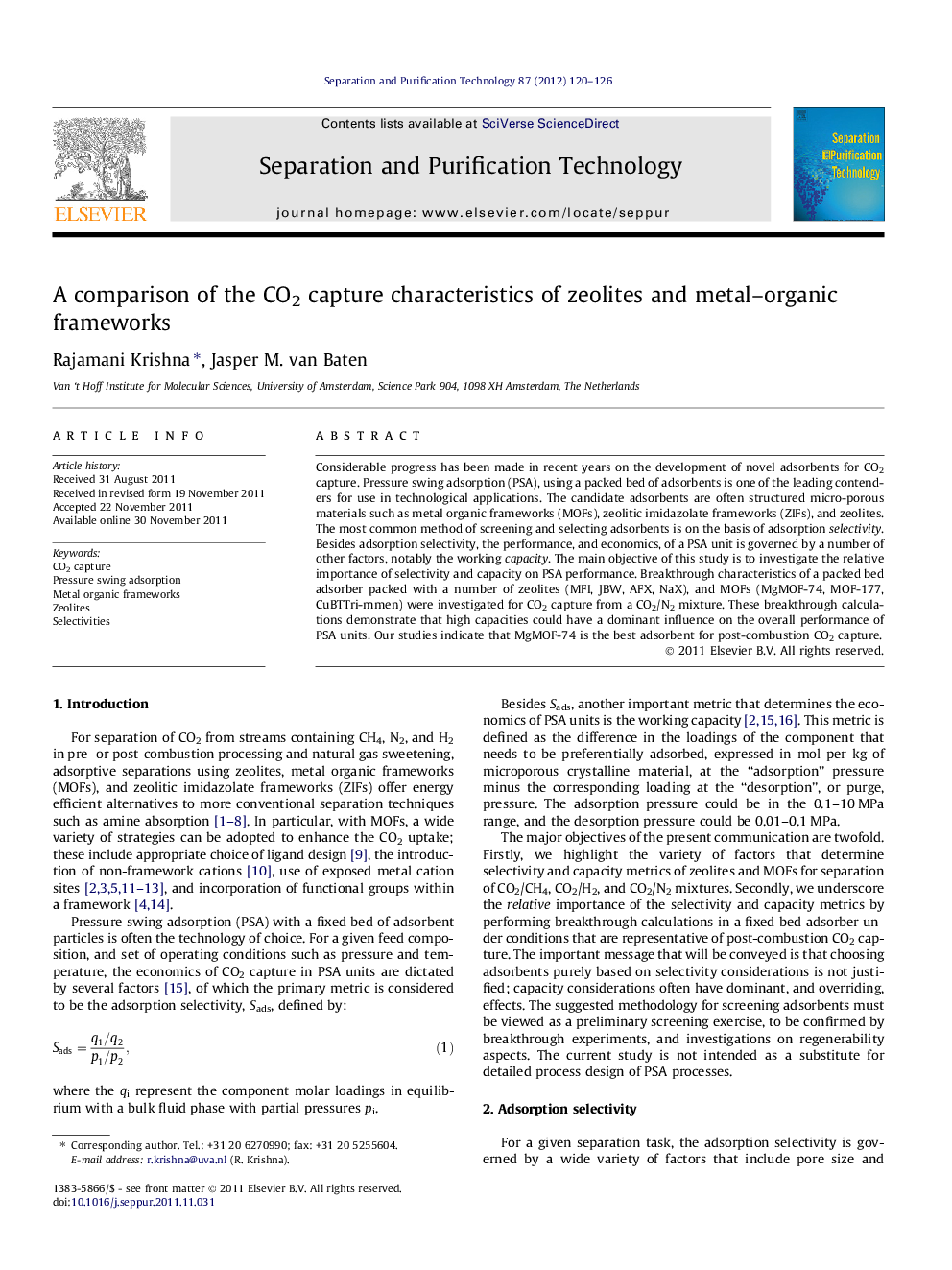| Article ID | Journal | Published Year | Pages | File Type |
|---|---|---|---|---|
| 642416 | Separation and Purification Technology | 2012 | 7 Pages |
Considerable progress has been made in recent years on the development of novel adsorbents for CO2 capture. Pressure swing adsorption (PSA), using a packed bed of adsorbents is one of the leading contenders for use in technological applications. The candidate adsorbents are often structured micro-porous materials such as metal organic frameworks (MOFs), zeolitic imidazolate frameworks (ZIFs), and zeolites. The most common method of screening and selecting adsorbents is on the basis of adsorption selectivity. Besides adsorption selectivity, the performance, and economics, of a PSA unit is governed by a number of other factors, notably the working capacity. The main objective of this study is to investigate the relative importance of selectivity and capacity on PSA performance. Breakthrough characteristics of a packed bed adsorber packed with a number of zeolites (MFI, JBW, AFX, NaX), and MOFs (MgMOF-74, MOF-177, CuBTTri-mmen) were investigated for CO2 capture from a CO2/N2 mixture. These breakthrough calculations demonstrate that high capacities could have a dominant influence on the overall performance of PSA units. Our studies indicate that MgMOF-74 is the best adsorbent for post-combustion CO2 capture.
Graphical abstractFigure optionsDownload full-size imageDownload as PowerPoint slideHighlights► Adsorptive separations are attractive for CO2 capture. ► The selectivity and capacity metrics do not go hand-in-hand. ► Breakthrough times reflect a combination of selectivity and capacity metrics. ► MgMOF-74 is the best adsorbent for post-combustion CO2 capture.
